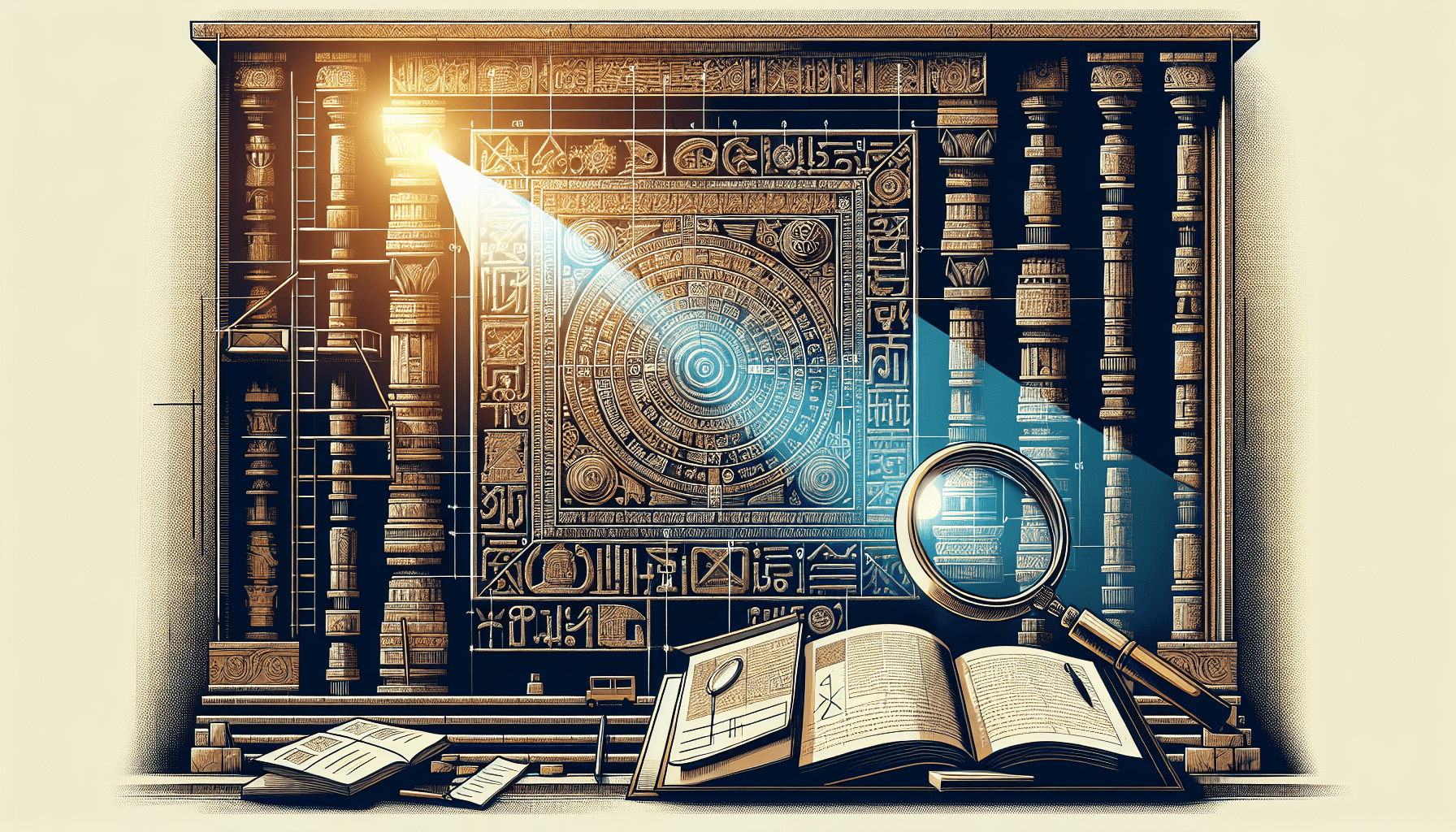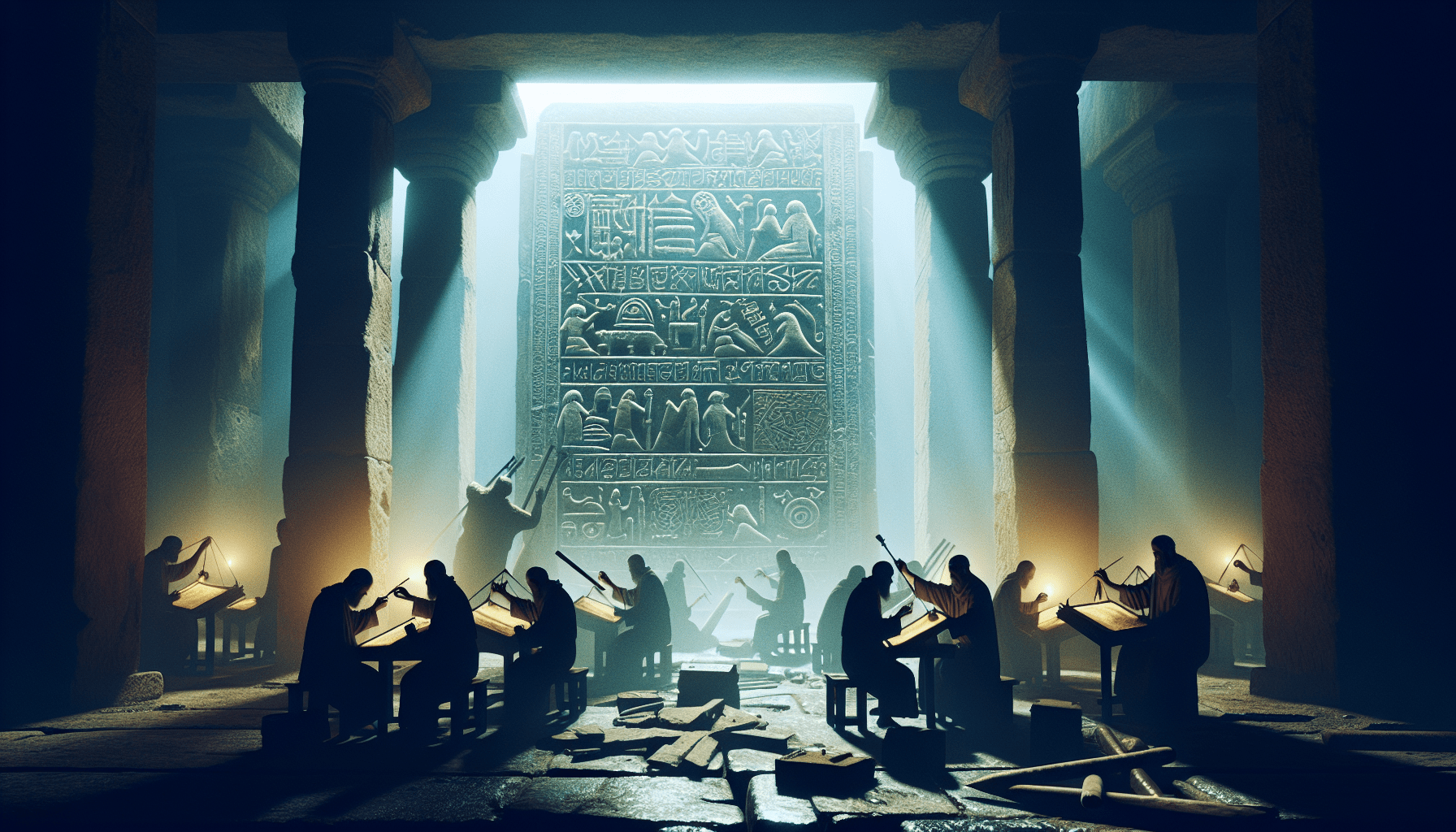In the historic and sacred city of Ayodhya, the recently constructed Ram Mandir stands proud, capturing the attention and awe of millions of visitors. Nestled within the sprawling temple complex, an intriguing artifact has been discovered – an inscription that has sparked curiosity and speculation. This inscription, carefully preserved and revered, holds the potential to unravel deep mysteries and shed light on the rich history and legends associated with Lord Ram and this ancient city. Join us as we embark on a fascinating journey to uncover the secrets behind the inscription found in Ayodhya Ram Mandir.
Table of Contents
History of Ayodhya Ram Mandir
Ancient significance of Ayodhya
Ayodhya, a city located in the state of Uttar Pradesh in India, holds immense historical and religious significance. It is believed to be the birthplace of Lord Ram, a revered deity in Hinduism. The city of Ayodhya has witnessed numerous significant events throughout history, making it a sacred land deeply connected to Hindu mythology.
Construction of original temple
The original temple in Ayodhya dedicated to Lord Ram was believed to have been constructed during the reign of King Vikramaditya, a legendary ruler from ancient India. The temple stood as a magnificent structure, inspiring devotion and attracting devotees from far and wide.
Destruction and rebuilding of the temple
Tragically, in the 16th century, the original temple was destroyed by the Mughal Emperor Babur. The demolition of the temple marked a dark chapter in the history of Ayodhya, leaving Hindus bereft of their cherished place of worship. However, the faith and devotion of the devotees remained unwavering.
Discovery of the Inscription
Archaeological excavation
In recent years, extensive archaeological excavations were carried out in Ayodhya, aiming to unearth the lost remnants of the ancient temple. These excavations brought to light a significant discovery – an inscription that held great historical and cultural importance.
Importance of the discovery
The discovery of the inscription brought immense joy and excitement among archaeologists, historians, and devotees alike. This inscription held the potential to provide valuable insights into the historical and religious context of the Ayodhya Ram Mandir.

Translation and Interpretation
Expert analysis
Upon the discovery of the inscription, it was carefully examined and analyzed by a team of experts comprising linguists, historians, and archaeologists. The expertise and scholarly skills of these individuals were crucial in deciphering the script and understanding its true significance.
Meaning and significance of the inscription
The translation of the inscription unveiled a deep connection to Lord Ram and the original temple that stood in Ayodhya. It expressed a profound devotion to the deity and the significance of the temple as a sacred site for devotees. The inscription shed light on the rituals and offerings made by the devotees, providing a glimpse into the religious practices of the time.
Content of the Inscription
Textual details
The inscription was carved on a stone slab and was written in an ancient form of Sanskrit. It contained a series of verses praising Lord Ram and describing the grandeur of the temple. The verses showcased the spiritual fervor and devotion of the people who visited the temple and the rituals they performed.
Religious references
The inscription made several references to the divine presence of Lord Ram and his divine attributes. It referred to the temple as the abode of the righteous ruler and praised the deity as the embodiment of compassion, righteousness, and justice. These references further solidified the temple’s significance in Hindu religious beliefs.

Religious and Cultural Significance
Connections to Lord Ram
The Ayodhya Ram Mandir holds immense religious significance as it is believed to be the birthplace of Lord Ram. For devout Hindus, the temple represents a sacred site closely associated with the deity and serves as a symbol of faith and devotion. The religious significance of the temple has been ingrained in the cultural fabric of the country for centuries.
Impact on Hindu beliefs and traditions
The discovery of the inscription reaffirmed the beliefs and traditions cherished by Hindus for generations. It fortified the spiritual connection between the devotees and their revered deity, Lord Ram. The inscription’s existence rekindled the enthusiasm for upholding the principles and teachings associated with Lord Ram, further strengthening the foundations of Hinduism.
Debate and Controversies
Controversial interpretations
As with any significant archaeological discovery, the interpretation of the inscription has generated various debates and controversies. Differing opinions have emerged regarding the exact historical context and implications of the inscription. Scholars and experts continue to engage in intense discussions, adding to the complexity of understanding the inscription’s full meaning.
Political implications
The Ayodhya Ram Mandir has been enveloped in political controversy, with several parties and individuals voicing differing opinions on its construction and historical significance. The discovery of the inscription has further ignited political debates, and its interpretation has been used as a rallying point by different groups to further their agendas. The inscription has become an emblem of cultural and religious identity, impacting the political landscape of the region.
Conservation and Preservation
Efforts to safeguard the inscription
Given the immense historical and cultural significance of the inscription, great efforts have been undertaken to ensure its preservation and safeguarding. Expert conservators and archaeologists have implemented advanced techniques to protect the inscription from environmental degradation and wear and tear.
Importance of preserving cultural heritage
The preservation of the inscription is a testament to the importance of safeguarding cultural heritage. It serves as a reminder of the rich historical legacy of Ayodhya and the religious beliefs associated with the temple. Preserving cultural heritage helps future generations connect with their roots, promoting continuity and a sense of shared history.
Public Reaction
Local and national responses
The discovery of the inscription elicited widespread excitement and enthusiasm among the local population of Ayodhya and the broader Indian community. People from all walks of life expressed their joy and pride in the cultural and historical heritage of Ayodhya. Local organizations and communities organized celebrations and events to commemorate the newfound inscription.
Social media and public discourse
With the advent of social media, the discovery of the inscription gained significant attention and traction online. People took to social media platforms to express their thoughts, share their interpretations, and engage in discussions surrounding the historical and religious significance of the Ayodhya Ram Mandir. This online discourse contributed to a wider public understanding and awareness of the inscription’s discovery.
Tourism and Cultural Tourism
Boost to tourism in Ayodhya
The discovery of the inscription has had a profound impact on tourism in Ayodhya. Devotees and history enthusiasts from all over the world flocked to the city to witness the historical site firsthand and experience the sacredness surrounding the Ayodhya Ram Mandir. This surge in tourism has provided a significant boost to the local economy, promoting cultural exchange and awareness.
Cultural tourism promotion
The inscription’s discovery has prompted government initiatives and efforts to promote cultural tourism in Ayodhya. Cultural festivals, exhibitions, and programs centered around the Ayodhya Ram Mandir have been organized to celebrate and showcase the city’s historical and religious heritage. These initiatives aim to foster a deeper appreciation for Ayodhya’s cultural significance, attracting visitors from diverse backgrounds.
Future Research and Study
Unanswered questions
Despite the extensive research conducted, several unanswered questions regarding the inscription remain. Scholars and experts continue to delve deeper into its historical context, seeking to unlock further insights and interpretations. The inscription’s discovery has opened the door to a world of possibilities for future research and study.
Further research opportunities
The inscription’s discovery has paved the way for future research and study in the fields of archaeology, history, linguistics, and religious studies. It presents an exciting opportunity for scholars and enthusiasts to explore the richness of Ayodhya’s heritage and contribute to the understanding of the cultural and historical tapestry of the region.
In conclusion, the discovery of the inscription in Ayodhya Ram Mandir has unveiled a deeper understanding of the historical and religious significance of the temple. It has rekindled faith, provoked debates, and ignited cultural and political discussions. As efforts continue to preserve and study the inscription, Ayodhya remains a beacon of devotion and a testament to the enduring power of faith in the hearts of millions.